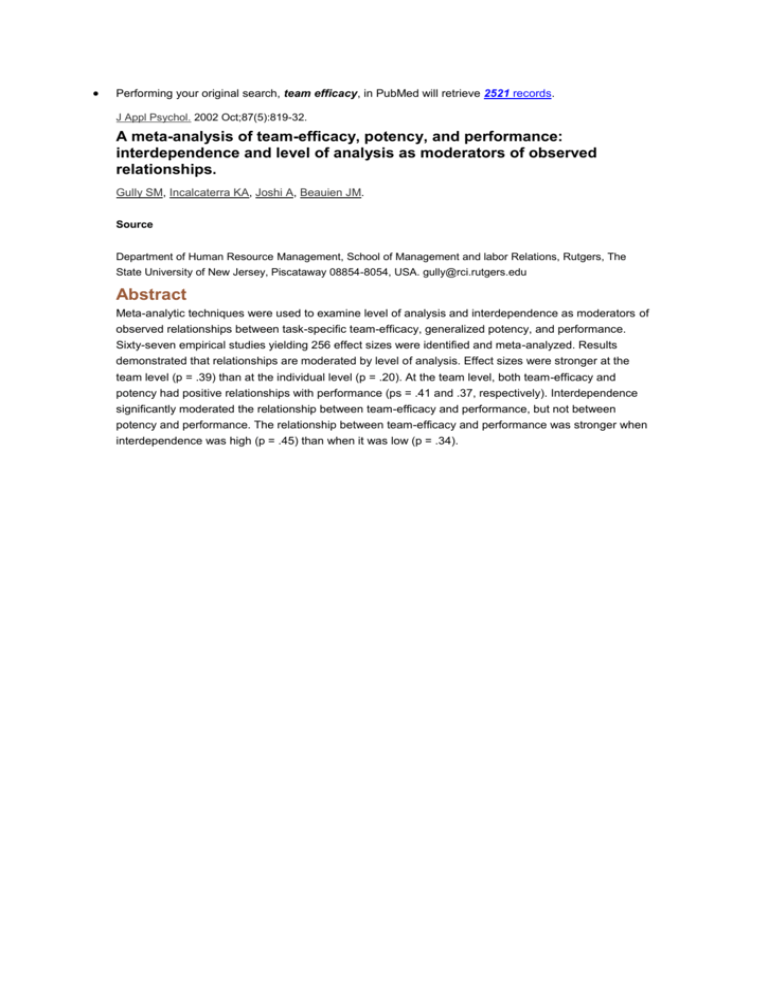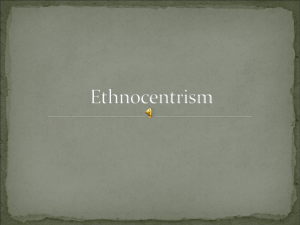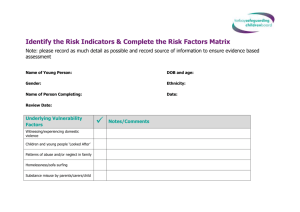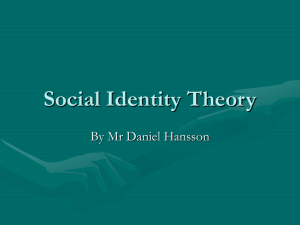
Performing your original search, team efficacy, in PubMed will retrieve 2521 records.
J Appl Psychol. 2002 Oct;87(5):819-32.
A meta-analysis of team-efficacy, potency, and performance:
interdependence and level of analysis as moderators of observed
relationships.
Gully SM, Incalcaterra KA, Joshi A, Beauien JM.
Source
Department of Human Resource Management, School of Management and labor Relations, Rutgers, The
State University of New Jersey, Piscataway 08854-8054, USA. gully@rci.rutgers.edu
Abstract
Meta-analytic techniques were used to examine level of analysis and interdependence as moderators of
observed relationships between task-specific team-efficacy, generalized potency, and performance.
Sixty-seven empirical studies yielding 256 effect sizes were identified and meta-analyzed. Results
demonstrated that relationships are moderated by level of analysis. Effect sizes were stronger at the
team level (p = .39) than at the individual level (p = .20). At the team level, both team-efficacy and
potency had positive relationships with performance (ps = .41 and .37, respectively). Interdependence
significantly moderated the relationship between team-efficacy and performance, but not between
potency and performance. The relationship between team-efficacy and performance was stronger when
interdependence was high (p = .45) than when it was low (p = .34).
MARC DUSSAULT, DANIEL PAYETTE and MATHIEU LEROUX (2008)
PRINCIPALS' TRANSFORMATIONAL LEADERSHIP AND TEACHERS'
COLLECTIVE EFFICACY. Psychological Reports: Volume 102, Issue , pp. 401410.
doi: 10.2466/pr0.102.2.401-410
PRINCIPALS'
TRANSFORMATIONAL
LEADERSHIP AND TEACHERS'
COLLECTIVE EFFICACY1,2
MARC DUSSAULT, DANIEL PAYETTE, MATHIEU LEROUX
Université du Québec à Trois-Rivières
Summary
The study was designed to test the relationship of principals'
transformational, transactional, and laissez-faire leadership with teachers'
collective efficacy. Bandura's theory of efficacy applied to the group and
Bass's transformational leadership theory were used as the theoretical
framework. Participants included 487 French Canadian teachers from 40
public high schools. As expected, there were positive and significant
correlations between principals' transformational and transactional
leadership and teachers' collective efficacy. Also, there was a negative and
significant correlation between laissez-faire leadership and teachers'
collective efficacy. Moreover, regression analysis showed transformational
leadership significantly enhanced the predictive capabilities of transactional
leadership on teachers' collective efficacy. These results confirm the
importance of leadership to predict collective efficacy and, by doing so,
strengthen Bass's theory of leadership.
Cited by
Xavier Dumay, Benoît Galand. (2011) The multilevel impact of
transformational leadership on teacher commitment: cognitive and
motivational pathways. British Educational Research Journal1-27
Online publication date: 29-Jun-2011.
CrossRef
AmSci Publications Office | 1917 S. Higgins Ave. | Missoula, MT 59801 |
phone 406-728-1702 | email Editors@AmmonsScientific.com
AmSci Subscription Office | P.O. Box 9229 | Missoula, MT 59807 | phone
406-728-1710 | email Subscriptions@AmmonsScientific.com
Copyright ©
All rights reserved.
Collective Self-Esteem, Personal SelfEsteem, and Collective Efficacy in Ingroup and Outgroup Evaluations.
Current Psychology
| December 22, 1999 | DE CREMER, DAVID; OOSTERWEGEL, ANNERIEKE
| COPYRIGHT 1998 Transaction Publishers, Inc. This material is published
under license from the publisher through the Gale Group, Farmington Hills,
Michigan. All inquiries regarding rights should be directed to the Gale
Group. (Hide copyright information)Copyright
n assessing the relationship between self-esteem and in-group/outgroup
evaluations, this study examined whether self-esteem is better measured at a
collective (collective self-esteem [CSE]) than a personal level (personal selfesteem [PSE]). It was expected that subjects high in CSE would engage in
more in-group favoritism (measured by in-group evaluations), whereas those
low in CSE would engage in more outgroup derogation (measured by
outgroup evaluations). No effect for PSE was predicted. Furthermore, the
study explored whether perceptions of collective efficacy may underlie this
relationship. Subjects played a public goods task. The in-group's outcome
was compared to the outcome of other relevant outgroups, enhancing
pressures towards intergroup differentiation. Consistent with the predictions,
subjects high in CSE evaluated in-group members more positively than
those in low CSE (i.e., in-group favoritism), whereas subjects low in CSE
evaluated outgroup members more negatively than those high in CSE (i.e.,
outgroup derogation). Also in line with our predictions, no effect for PSE
was found. Perceptions of collective efficacy appeared to be a mediator of
the effect of CSE.
According to social identity theory (SIT) part of individuals' self-concept is
derived from their group memberships, called social identity (Tajfel and
Turner, 1986; Hogg and Abrams, 1988). It is assumed that individuals strive
to maintain or enhance positive feelings about their own social identity and,
hence, self-esteem and, therefore, engage in all sorts of in-group protecting
behavior (De Cremer and Vanbeselaere, 1999). In doing this, group
members try to differentiate the in-group from relevant outgroups in a
positive way. For example, they evaluate in-group members more positively
than outgroup members (Brewer, 1979), or allocate more points to the ingroup than to the outgroup (Tajfel et al., 1971). Thus, SIT assumes a
straightforward relationship between individuals self-esteem and intergroup
differentiation (Abrams and Hogg, 1988; Messick and Mackle, 1989; Hogg
and Sunderland, 1991).
However, it is unclear whether self-esteem should be considered a cause or
product of intergroup differentiation (Hogg and Abrams, 1988, 1990; Long
and Spears, 1997). Tajfel and Turner argue for both, stating that "a positive
social identity is based to a large extent on favorable comparisons that can
be made between the in-group and some relevant out-groups," as well as
that, "like low status groups, the high status group will react to insecure
social identity by searching for enhanced group distinctiveness" (1986, 16,
22). Abrams and Hogg (1988), therefore, distinguish between two
complementary corollaries. The first corollary states that engaging in the act
of in-group favoritism will elevate self-esteem (i.e., self-esteem as a
product). The second corollary states that low or threatened self-esteem will
motivate people to engage in in-group favoritism (i.e., self-esteem as a
cause).
Until now, the empirical findings for both corollaries have been mixed. For
both corollary 1 and 2, supportive evidence (e.g., corollary 1: Oakes and
Turner, 1980; Lemeyre and Smith, 1985; corollary 2: Hogg and Sunderland,
1991; Platow et al., 1997) as well as unsupportive evidence (e.g. corollary 1:
Hogg and Sunderland, 1991; corollary 2: Ruttenberg et al., 1996; Smith and
Tyler, 1997) has been found (Rubin and Hewstone, 1998). As explained
below, one major factor which seems to contribute to this confusing pattern
of results is the type of self-esteem assessed (Crocker and Luhtanen, 1990).
Crocker and her colleagues have argued that self-esteem derived from the
person's social identity (CSE) should be measured, instead of esteem from
personal identity (PSE), to examine whether people low in self-esteem
indeed display more in-group favoritism (i.e., corollary 2).
The central focus of the present study will be on self-esteem as a cause of
in-group favoritism, and subjects' CSE and PSE will be measured.
Moreover, based on findings of recent research (Crocker and Luhtanen,
1990; Crocker et al., 1993; Long and Spears, 1997), we will explore whether
individuals high in CSE evaluate their in-group members more positively
and outgroup members more negatively than individuals low in CSE. This
latter prediction is in contrast with PSE findings.
Collective self-esteem and group evaluations
The vast majority of research on the self-esteem hypothesis has used a
measure of PSE. Such a measure is not specifically related to the context of
intergroup relations and, thus, can be considered a less appropriate level of
abstraction (Turner et al., 1987). A more appropriate way of examining the
self-esteem hypothesis would be to use a self-esteem measure derived from
social identity, rather than from personal identity (Crocker and Luhtanen,
1990; Luhtanen and Crocker, 1991; Long and Spears, 1997; De Cremer et
al., 1999). That is, predictions concerning the second corollary should be
based on measurements of CSE (i.e., Luhtanen and Crocker's (1992)
sixteen-item CSE scale). Scores on this CSE scale have been found to be
relatively independent of scores on personal self-esteem scales like the
Rosenberg scale (1979). Applying the CSE scale in situations of a potential
threat to the in-group (i.e., success or failure feedback), Crocker and
Luhtanen (1990) found that, in contrast to people low in CSE, people high in
CSE showed in-group favoritism, thereby indirectly enhancing the in-group.
This finding suggests that the second corollary accounts for individuals high
in CSE rather than low in CSE.
An explanation for Crocker's and Luhtanen's findings may be derived from
research on PSE. According to the personal self-esteem literature, people
high in PSE pursue different goals than those low in PSE (Tice, 1991;
Baumeister, 1993). A review by Baumeister, Tice, and Hutton (1989)
showed that low self-esteem persons are motivated primarily by selfprotection, and high self-esteem persons more by self enhancement
(McFarlin and Blascovich, 1981). Extrapolating this assertion to the area of
intergroup relations, Crocker, Blaine and Luhtanen (1993) argue that
individuals high in CSE will be motivated to enhance the in-group status
and their social identity by exhibiting in-group favoritism, whereas those
low in CSE will rather protect the in-group status by exhibiting outgroup
derogation (Brown et al., 1988). Some support for this assumption was
provided by Branscombe and Wann (1994). When subjects' social identity
was threatened, lowering their CSE, they exhibited more outgroup
derogation than when their self-esteem was not lowered.
Following this framework, a difference between high and low CSE
individuals should be found in the way they rate the in-group and a relevant
outgroup. Individuals high in CSE will evaluate in-group members more
positively than those low in CSE (Hypothesis 1a). In contrast, concerning
outgroup rating, individuals low in CSE will evaluate the outgroup more
negatively than those high in CSE (Hypothesis 1b; Note 1).
However, Long and Spears (1994, 1997, 1998) argue that both PSE and
CSE are likely to be related to individual's intergroup actions, in …
View articles courtesy of your local library







